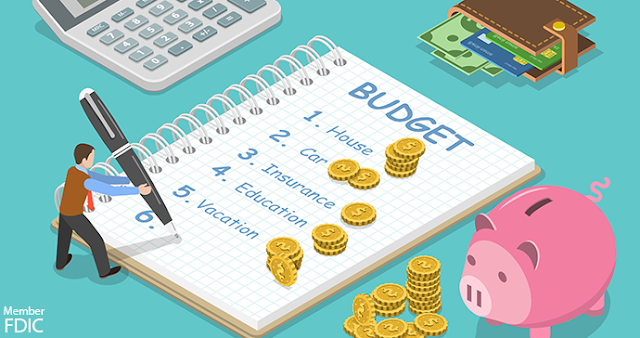BUDGETING THROUGH THE TOUGH TIMES
By Dr.S.Johnsi
A personal budget is a tool to achieve personal financial goals. It is a financial plan that allocates personal income, expenses, debt repayment, and savings. The past income and
expenses can be taken as a reference while creating the budget. Salary, rental
income, and other income sources like interest income are consolidated under the
head income. Bills and payments are the expenses. If you want to control your spending and work
towards your financial goals, you need a budget.
A written, monthly budget allows you to plan your income sources and your
savings and expenses. The main advantage is it allows you to track your
spending habits. It helps you to identify how much is spent on each bill and whether
you have spent more or less on it.
1. Calculate your income
If you are a salaried person the net income should be considered for income. If you have other sources of passive income like rental income, interest income, etc then all those should be considered. If you are self-employed and you have variable income, then the income from the lowest-earning month should be considered as the base income.
2. List out the monthly expenses
The second step is to list out all the monthly expenses like
- Rent
- Car loan/ other loan installments
- Insurance policies
- Groceries
- School fees
- Medical expenses
- Clothing
- Transportation expenses
- Entertainment expenses etc.
3. Determine fixed and variable expenses
Classify the total expenses into fixed and variable expenses. Fixed expenses include rent, loan installments, and insurance policies. Variable expenses are those expenses that vary from month to month like
- Groceries
- Entertainment
- Medical expenses
- Gifts etc.
The classification helps to reduce discretionary expenses. The next step involves breaking down the spending categories by percentages. It is a powerful tool that helps you to track where your money is spent and how much is spent on various expense categories. The pie chart below shows the budget categories.
There are other
popular techniques for budgeting. 50-30-20 is a simple rule to plan personal
budgets with THREE main categories.
50-30-20 Rule
Needs - 50% are essential
things a person requires to lead a life (or survival) such as food, housing,
school fees, grocery, water, medical insurance, gasoline, electricity,
etc. The amount you spend on groceries and dining out should not exceed
30% of your needs budget. As a thumb rule rent should not exceed 30% of your
needs budget. For example, if your monthly take-home pay is Rs.50,000 and the
needs budget would be Rs.25,000. The budget for house rent would be Rs.7,500 or
less.
Wants - 30% are things a person might want but can live without it. They're not necessities and so spending on those things can be flexible depending on one’s lifestyle. These things improve one’s quality of living like movies, travel, dining out, buying the latest gadgets, or even games.
Savings - 20% of the income could be saved to meet emergency situations
The objective of the
budget is to have your income and expense columns equal. This equal balance
shows that all the income is accounted for and budgeted toward an expense
category or a financial goal.
Budgeting and recording the expenses throughout the month will help you to avoid overspending and also to identify unnecessary expenses or avoidable expenses and problematic spending patterns. Having a monthly budget will help you to feel more confident during tough times like now.





Excellent and informative blog Prof Jhonsi !!
ReplyDelete